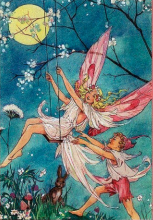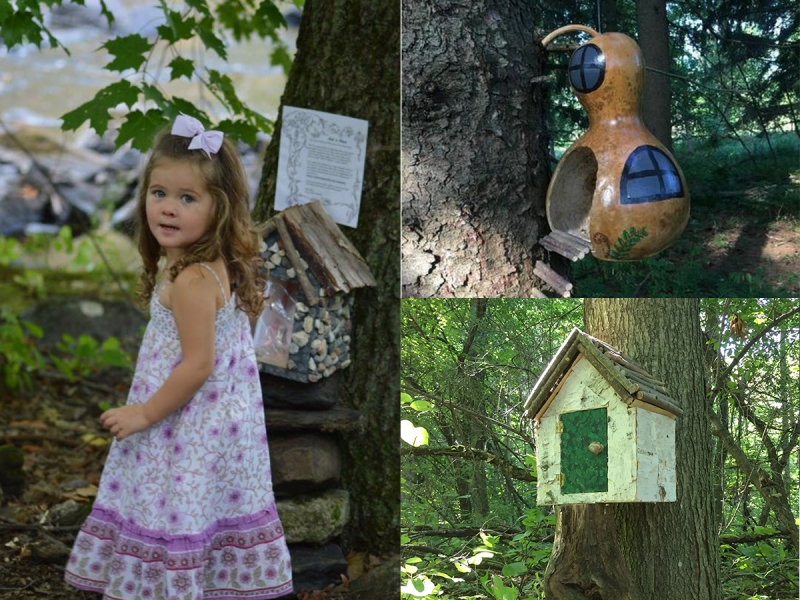
North Country residents young and old left nature questions for woodland fairies at three of their houses in Canton. Photo: Natalie Pritcher
Ask a Fairy Part 1: Introducing Blossom and Thimble
Each year a group of migrating group of woodland fairies passes through Canton on its way south for the winter. Woodland fairies know all the North Country plants and animals, and this year they invited us to visit their houses and ask questions about North Country nature. If you were walking along the Kip Trail, exploring Heritage Park, or running through the Remington Recreation Trail last month, you may have been lucky enough to spot a fairy house nestled in the trees awaiting curious visitors.
Nature Up North is very pleased to introduce our fairy friends Blossom Dewdrop and Thimble Hickory, who have volunteered to answer your questions this year. With leaves falling and temperatures dropping in the North Country, Blossom and Thimble have migrated south to their winter home. But they still took the time to answer your questions from afar!
Thimble and Blossom received so many question that they can’t answer all at once, so this is just Part One. If your question isn’t answered here stay tuned for Part Two!
Are you a boy or a girl? What’s your name? How old are you? Do you want to be friends? (Kinsey, age 8)
Dear Kinsey,
I would love to be friends with you! My name is Thimble, and my twin sister Blossom and I are both 11 years old. It is really hard to see fairies, because we’re so small, but you can see our magic in nature if you look closely. Always remember that anyone can be like a fairy, as long as you help others and you’re always nice to people! You can also go out and help the environment by taking care of plants and animals.
Dear Kinsey,
Hi Kinsey! My name is Blossom. I am a girl fairy and my brother’s name is Thimble. Of course we can be friends Kinsey! My brother and I are so small that you won’t be able to see us, but I’ll be watching you to see if you are helping and being nice to people and taking care of the environment around you. If you want to be a fairy like us that is all you have to do!
What is your favorite animal? (Ethyn, age 4, Everett, age 3, Sawyer, age 1)
Hi Ethyn, Everett, and Sawyer,
My favorite animal in the woods is the yellow warbler. Warblers are small song birds that stay near the top of small shrubs and trees. They eat caterpillars and other small insects. I like these birds because of their brilliant yellow color and the beautiful songs they sing. The best song they sing to me is Row, Row, Row Your Boat. They are very friendly. I am best friends with Anna the yellow warbler, and we love talking about how pretty nature is around us.
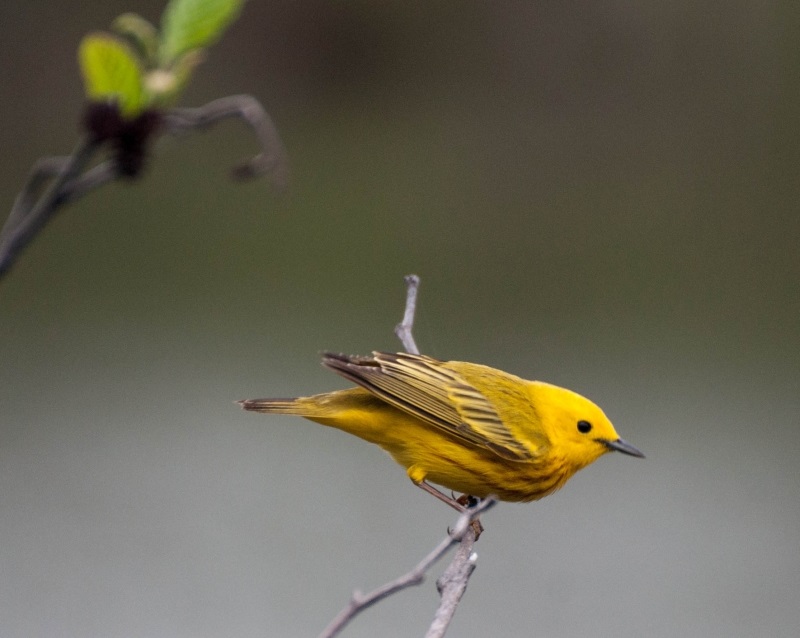
Yellow warbler. Photo: Chris Buck, natureupnorth.org.
Why are bugs black? (Jack, 4 yrs old)
Hi there, Jack! You asked such an interesting question! I have met many bugs in my day, and they come in all colors of the rainbow. Many bugs are black, because they want to blend into the woods to hide from animals who want to eat them. When you look at the ground in the woods, doesn’t it look dark? Black bugs want to look like the brown and black colors on the ground, so they can scurry around without other people or animals seeing them! But, other bugs don’t always live in dark places. Some, like grasshoppers, love to live in the green grass. Just like the black bugs, the grasshoppers want to blend into the grass, which is why they are green.
Where do frogs go in the winter? (Brendan, age 12, and Tim, age 58)
Hey Brendan and Tim!
In the winter different kinds of frogs go hibernate in different ways. Frogs that live on the land most of the time, like spring peepers and wood frogs, dig under the leaves in the woods and hibernate for the winter. Wood frogs can even freeze solid and come back to life in the spring! Other frogs that live mostly in water, like bull frogs, will spend the winter in the mud at the bottoms of rivers, lakes, and ponds.
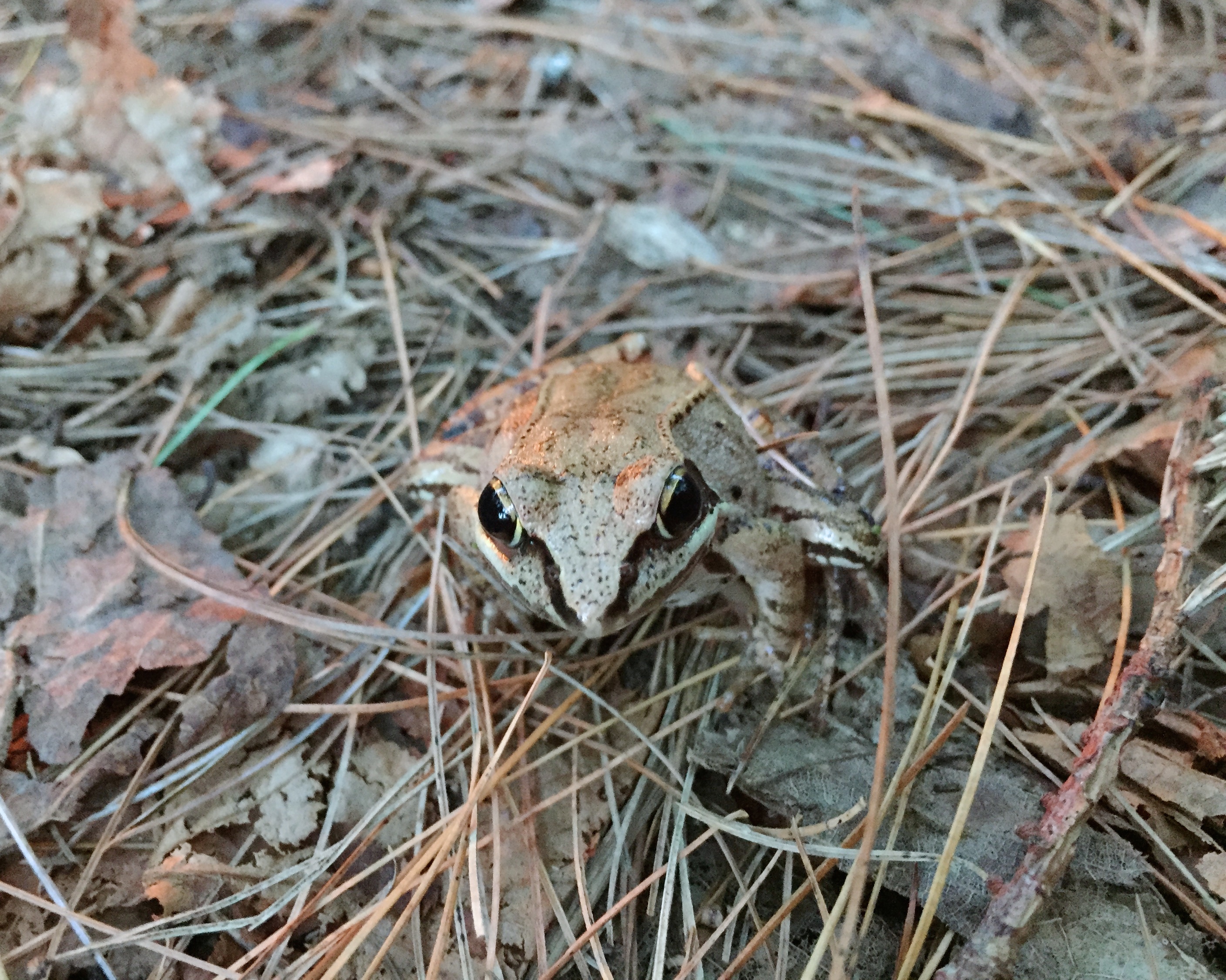
Wood frog. Photo: Justin Dalaba, natureupnorth.org.
How do you talk to animals? (Logan H, age 9)
Good question Logan!
Different kinds of animals use different ways to communicate with each other. It is like different people who speak different languages. Because of that reason, we have to learn the language of each kind of animal. For example, when bees want to talk to each other they “dance” and fly in different patterns to show other bees where the flowers are. To talk to bees we have to learn their dances. Wespend a lot of time with birds, and know hundreds of bird calls. Bullfrogs are harder to talk to, because we fairies are so small it is hard to make such a low-pitched noise!
Do otters live in the rivers up here? If so, what kind? (Fairy Friend)
Hello,
Yes, North American river otters do live up here! They can be found in rivers, lakes, ponds, small streams, and marshes. In fact, canoers have reported seeing them on the Little and Grasse Rivers in Canton! In the past, river otters were found all over New York. However, otters are not as common as they once were due to water pollution, habitat loss, and trapping. For the past 25 years many people have been trying to help otter populations in New York. I spoke with some of my otter friends and they said a lot more otters are coming back to their homes here, because people are being nice to them again!

River otter on the Raquette River. Photo: Jacob Malcomb, natureupnorth.org.
How do trees grow big? (Avery, age 3)
Dear Avery,
Good question! Just like you, trees need food to grow. But unlike you, trees can eat sunlight. Trees grow big taking in water and nutrients through their roots, and absorb energy from the sun with their leaves. They turn the sunlight, water, and air into sugars that give them energy to grow! The biggest tree in the North Country is the Eastern white pine. It can grow up to 150 feet tall. That is as tall as three school buses stacked long-ways on top of each other!
Why do the trees like the sun? (HKS, age 4)
Dear HKS,
Your question was very interesting, so I asked some of my tree friends why they love the sun so much. They said, just like me and you, trees need food to live, but instead of going to the store for dinner, trees make their own food! The trees use the sun, water and the air to make their food. They do this by using the energy of the sun to break apart water and air, and then they put it back together to make sugar that they can eat! It’s kind of like if you took two Lego buildings, took them apart, and made an even bigger and better building.
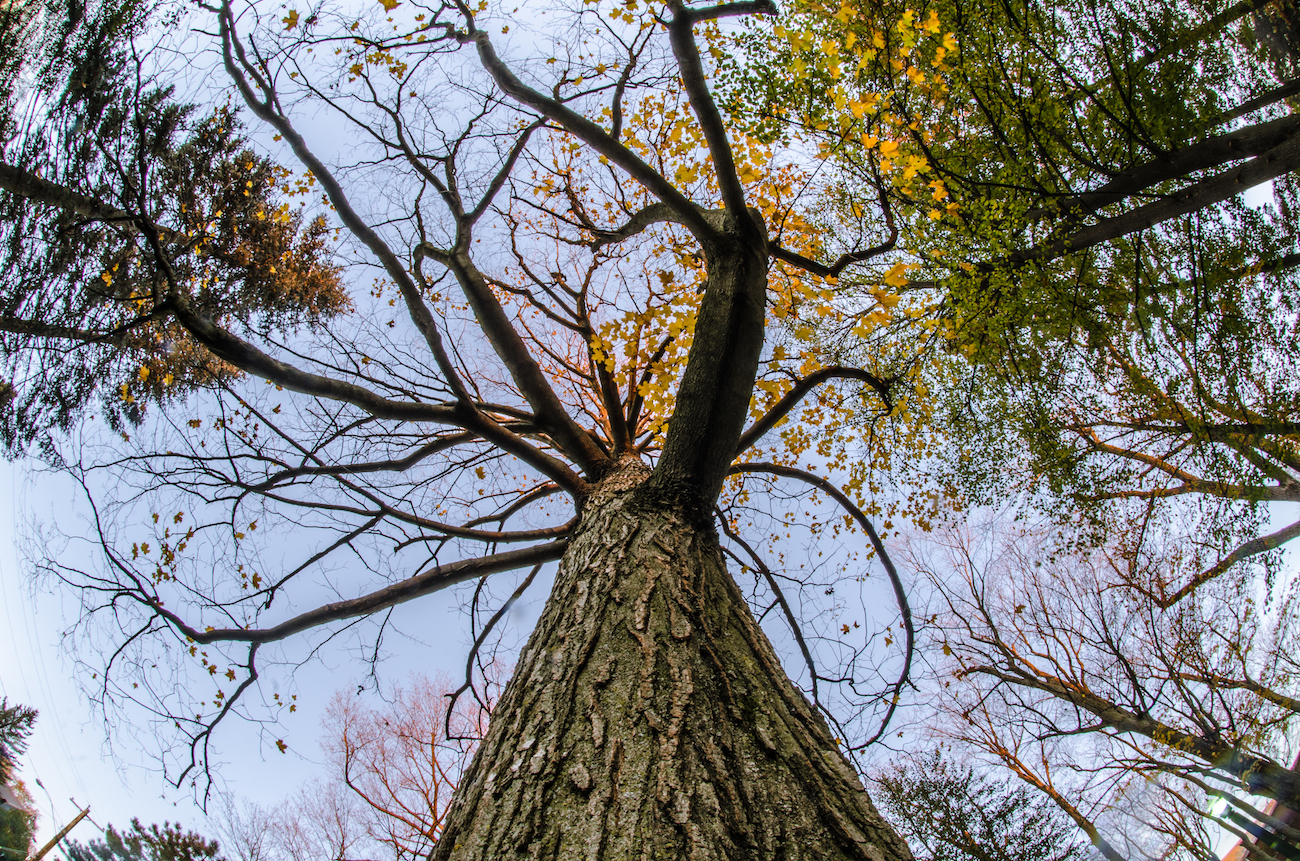
Photo: David Pynchon, natureupnorth.org.
How do you take baths? (Mae O’Shea, age 9, HKS, and Logan, age 9)
Hello Mae, Logan and HKS,
Fairies love taking baths! We like to twinkle throughout the night when flying across the forest in the dark. In order to stay extra sparkly, we take baths in rivers, lakes, or even drops of water on tree leaves. We always use biodegradable soap to wash up, which means the soap doesn’t harm the environment. We use the nectar from flowers as shampoo to clean our hair. Sometimes the fish will even blow bubbles in the water, and we can have bubble baths! We don’t have to worry about lakes or rivers being frozen in the winter, because we go down south where it is mostly warm all year.
Why are some trees growing so twisted? (Fairy Friend)
Hello,
There are different reasons for some trees to look twisted. Some trees twist so that their leaves to can reach the sunlight. Others are twisted because it helps snow slide down the tree instead of piling up, where the weight of the snow could snap off the branches. Another reason is that weather conditions, such as strong winds, can cause a tree to look twisted. The constant pressure on the trunk from different directions can slowly mold the tree into a spiral shape. Whenever fairies find a twisted tree, we take turns sliding down it, like the slides at a playground! We love to do it over and over again until the ladybugs, or beetles want a turn.
Why do turtles swim in the water? (Lainey, age 3)
Dear Lainey,
Turtles have webbed feet, which they use to paddle themselves through the water. Sometimes turtles swim to find food – they are known to eat small fish, frogs, and insects in the water. Turtles cannot breathe underwater, so they need to come up to the surface to breathe. Once they’re done swimming, they find a spot on land or on a log to absorb the heat from the sun sun to raise their body temperature. We fairies like to sit on logs with turtles in the summer and enjoy the sunshine! Many turtles in the North Country spend the whole winter under water, which is actually warmer than the air on freezing days.
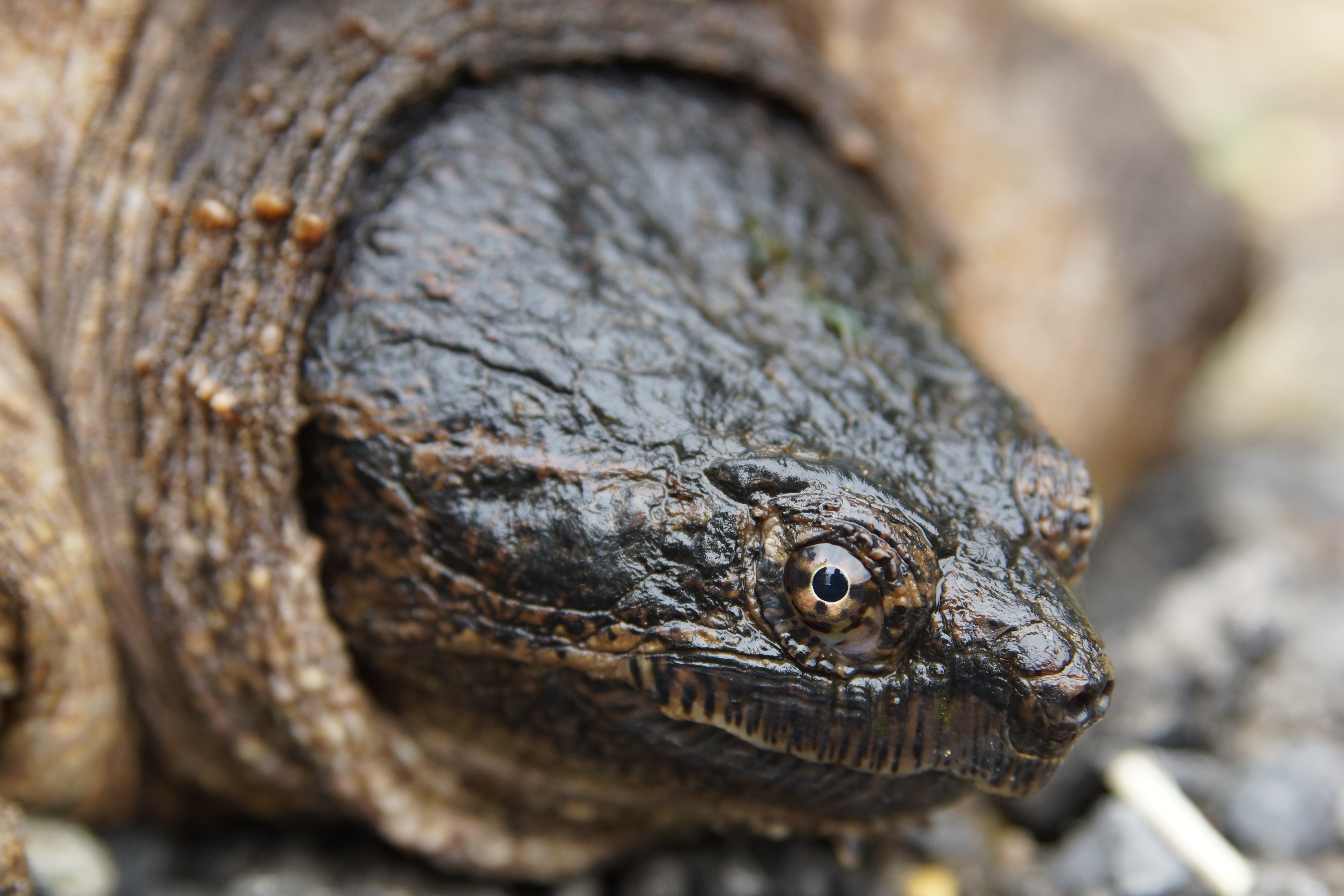
Snapping turtle. Photo: Jake Van Deursen, natureupnorth.org.
Do chipmunks hibernate all winter? (Friend of the Fairies)
Dear Curious Human,
I found some nice chipmunks around Canton, and I asked them how they spend their winters. They said that chipmunks spend all summer and fall collecting seeds and nuts and storing them in a little hole in the ground called a burrow. When winter finally comes, and it’s too cold to collect any more food, the chipmunks go into their burrows to hibernate, but because they are so small, chipmunks have to wake up and eat occasionally. If it is warm enough in the winter he might leave to find some more food, so if you see any chipmunks in the winter that is why!
Where do you sleep at night? (there is no bed in your little house.) (Lance, age 5)
Dear Lance,
I don’t actually sleep in my house. I use my house as a mailbox to take questions from kids like you! Sometimes I invite my fairy friends over to my house too. My favorite place to sleep is on the leaves of maple trees, because the leaves are very big and flat. It is very comfy, and if it’s cold I usually ask the nice birds in the woods for a few feathers to make a blanket.
Stay tuned for Part 2!

